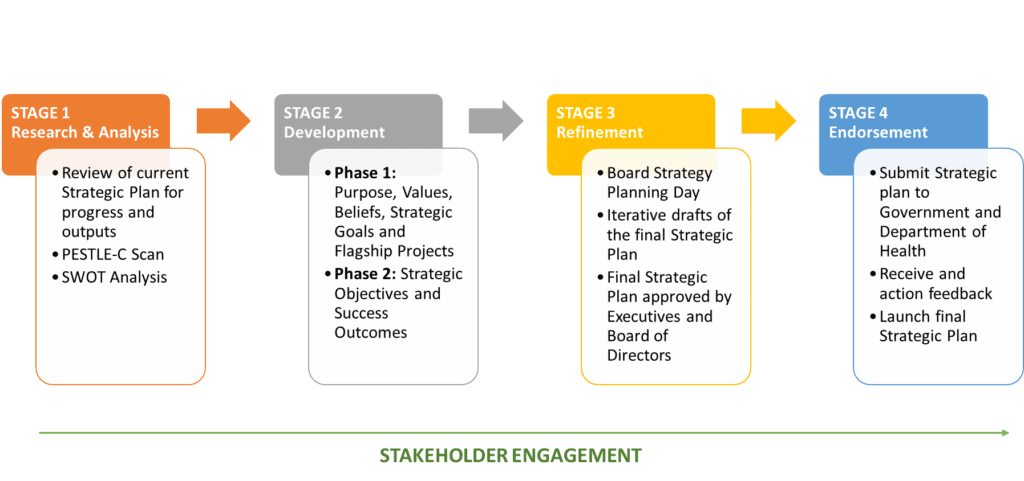
By Soumya Shah
2nd Year Management Intern
“Tactics without STRATEGY is the noise before defeat” – Sun Tzu
My recent experience in the Health Management Internship Program (HMIP) have raised my appreciation for the significance of strategic decision-making and planning within health organisations. Strategic decisions have long-term horizons, multi-disciplinary impacts and are made within complex systems by top-level leaders to ensure future success and alignment to organisational vision, goals and objectives (Witcher, 2020). In an ever-evolving healthcare landscape, strategic planning is crucial for health services to adapt to changing needs, provide optimal patient care and achieve long-term sustainability and success.
A well-structured strategic plan serves to guide hospital administrators, staff, and other stakeholders towards common goals and objectives. Victorian public health services have a legal requirement under the Health Services Act 1988 to develop and maintain a contemporary Strategic Plan approved by the Victorian Minister for Health.
Below are my observations and learnings from my development of a long-term Strategic Plan for a public health service during the HMIP.
Health Service Strategic Plan – Project Map

I completed the first two stages of the project during my placement at a Victorian public health service.
Stage 1: Research & Analysis
This first stage is crucial to creating a solid, evidence-based foundation for subsequent stages in a Strategic Plan. It ensures that the new strategy aligns with future trends in population health as well as internal and external factors impacting health service provision and performance. It also provides an opportunity to engage key leaders within the health service, gaining buy-in, confidence and trust in the process from the outset.
During this stage of the project, I engaged with health service executives, directors, managers and leaders via interviews, workshops and surveys to develop the following tasks and their resulting outputs:
- Task: Undertake a review of the current strategic plan to determine progress in achieving strategic goals and objectives, areas of success and those requiring improvement / continuation in future strategies throughout the health service.
Output: Review report of the current Strategic Plan, with recommendations for the development of the new Plan for the Executive team and Board of Directors. - Task: Complete an external environment scan using the PESTLE-C framework to determine future Political, Economic, Social, Technological, Legal, Environmental and Clinical trends on a local, national, and global scale that would impact the organisation’s staff, patients, community, services and performance over the next decade.
- Task: Conduct an internal environment scan using a SWOT analysis to understand internal strengths and weaknesses as well as external opportunities and threats impacting optimal health service strategies and operations in correlation with patient and community needs.
Output: Internal and external environmental scan report for the Executive team and Board of Directors.
Stage 2: Development
In this stage, all the findings and outputs from Stage 1 were collated to draft the Strategic Plan. This was an iterative process that required me to engage with key stakeholders at multiple points to inform, test and modify the strategy’s goals, objectives and flagship projects. This process ensured alignment with the health service’s mission, vision, values, and beliefs while providing clear, actionable and measurable priorities to improve competitiveness in delivering high quality services in line with future internal and external trends.
Key Learning 1: Strategically plan the ‘Strategic Plan’
- I used the Department of Health and Human Services (2017) Strategic planning guidelines for Victorian health services as a framework for developing a Strategic Plan that aligns with future state-wide health system requirements and plans.
- Further research and engagement with the leadership team enabled me to develop a Development Framework and Timeline in the initial stages of commencing the project. This informed the setting of realistic timeframes for implementing key stages, milestones, outputs, updates and approvals required by health service leaders (Executives and the Board of Directors) up to the point of submission to the Minister of Health and adoption of the approved plan.
- I kept stakeholders engaged with updates and progress of the Strategic Plan, by strategically including these items in the agendas of key meetings scheduled across the organisations. These included Executive and Board meetings, Board strategy planning days, leadership events and several committee meetings (junior and senior medical staff, allied health staff, support staff, consumer engagement and governance committees). These regular updates facilitated widespread engagement throughout the health service and the external community while optimising use of resources and availability of key stakeholders.
Key Learning 2: Engage, Engage, Engage and Close the Feedback Loop
- Widespread, structured engagement with internal and external stakeholders throughout the process is key to developing a well-informed, comprehensive Strategic Plan that aligns with the needs and expectations of all relevant parties. This includes health service leaders, clinical and non-clinical staff, peak bodies and unions, patients, community members, volunteers, key government and non-government agencies, community health centres and other health services.
- I used the Department of Health and Human Services (2018) Stakeholder Engagement Toolkit as framework to create a Stakeholder Engagement Map and Engagement Plan. This identified all key internal and external stakeholders, the level of participation required from each group based on their impact on the Strategic Plan (i.e., on a spectrum from informed to empowered) as well as the best method(s) and timelines of engaging them.
- This toolkit was used alongside the Development Framework and Timeline to ensure all stakeholders were appropriately engaged at the right level and timeframe in the development of the Strategic Plan. Use of these tools also made regular touchpoints available to stakeholders to close feedback loops, keeping them updated on the progress, actions and changes that were informed by their contribution to the development of the Strategic Plan.
- Ultimately, this consultative approach ensured that the final Strategic Plan was underpinned by an engagement process that enabled decision-makers to:
- understand diverse perspectives
- identify key needs and priorities
- build consensus and support
- enhance transparency and trust
- access expert knowledge
- anticipate and manage resistance (potential or actual).
Key Learning 3: Agility is key to an iterative design process
- Developing a Strategic Plan is an iterative process, whereby each stage, stakeholder engagement activity and feedback from the Executive team and Board of Directors impacts the content within the plan. Therefore, multiple drafts, iterations and refinement of outputs were required throughout the project prior to arriving at the final product.
- It was vital for me to maintain an open mindset in understanding the diversity of perspectives, as well as the (sometimes competing) priorities and agenda from various stakeholders. A high degree of flexibility and adaptability was key to considering those perspectives/priorities and defining, refining and implementing the strategic goals within the plan.
References
Department of Health and Human Services. (2017). Strategic planning guidelines for Victorian health services. https://content.health.vic.gov.au/sites/default/files/migrated/files/collections/policies-and-guidelines/s/strategic-planning-guidelines-for-victorian-health-services.pdf
Department of Health and Human Services. (2018). Stakeholder engagement toolkit. https://vgls.sdp.sirsidynix.net.au/client/search/asset/1296591/0
Witcher, B. (2020). Absolute essentials of strategic management (1st ed.). Routledge. https://doi.org/https://doi.org/10.4324/9780429430794
Disclaimer: Views are those of individual authors and not those of ACHSM or management intern’s employers
